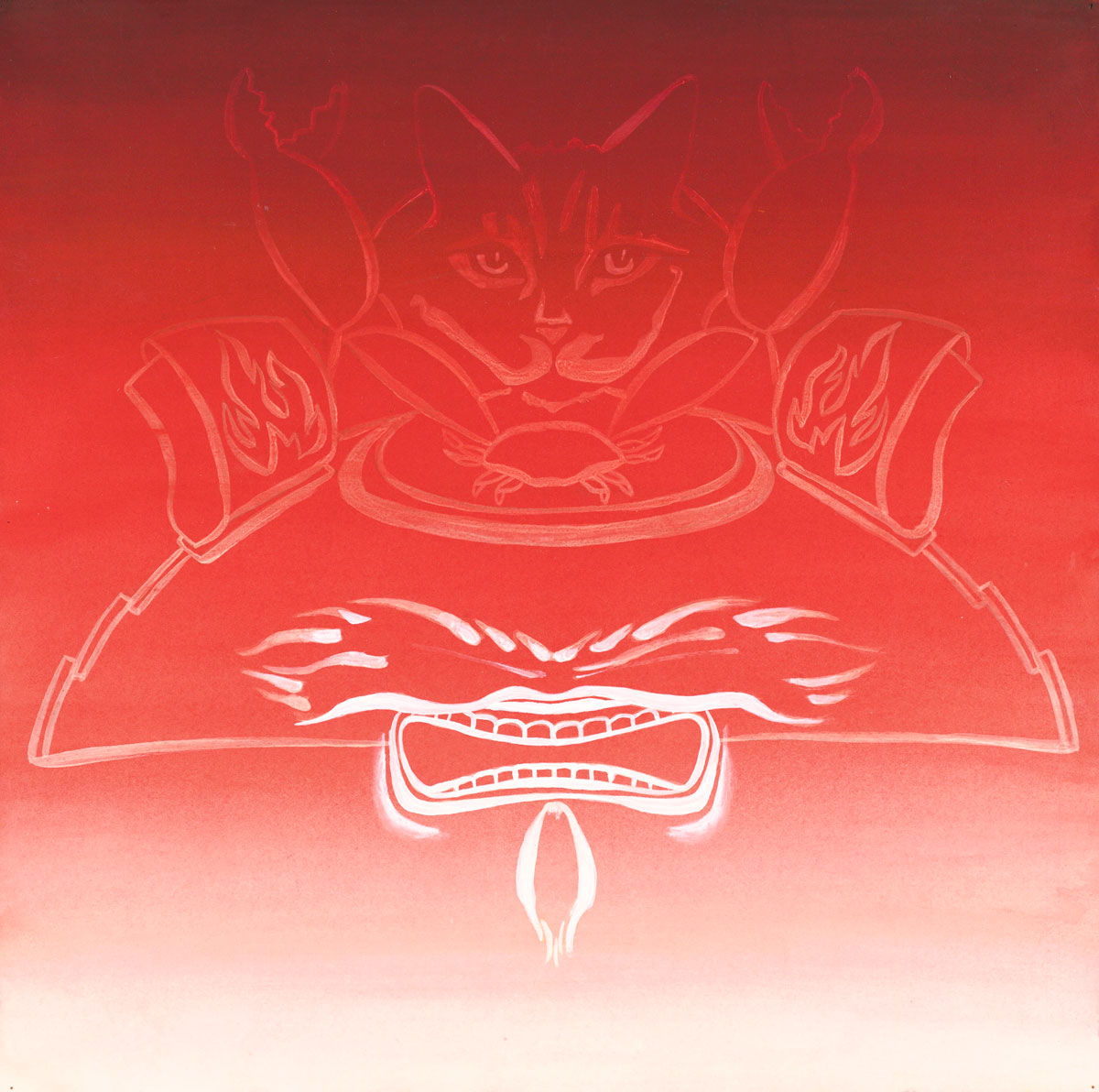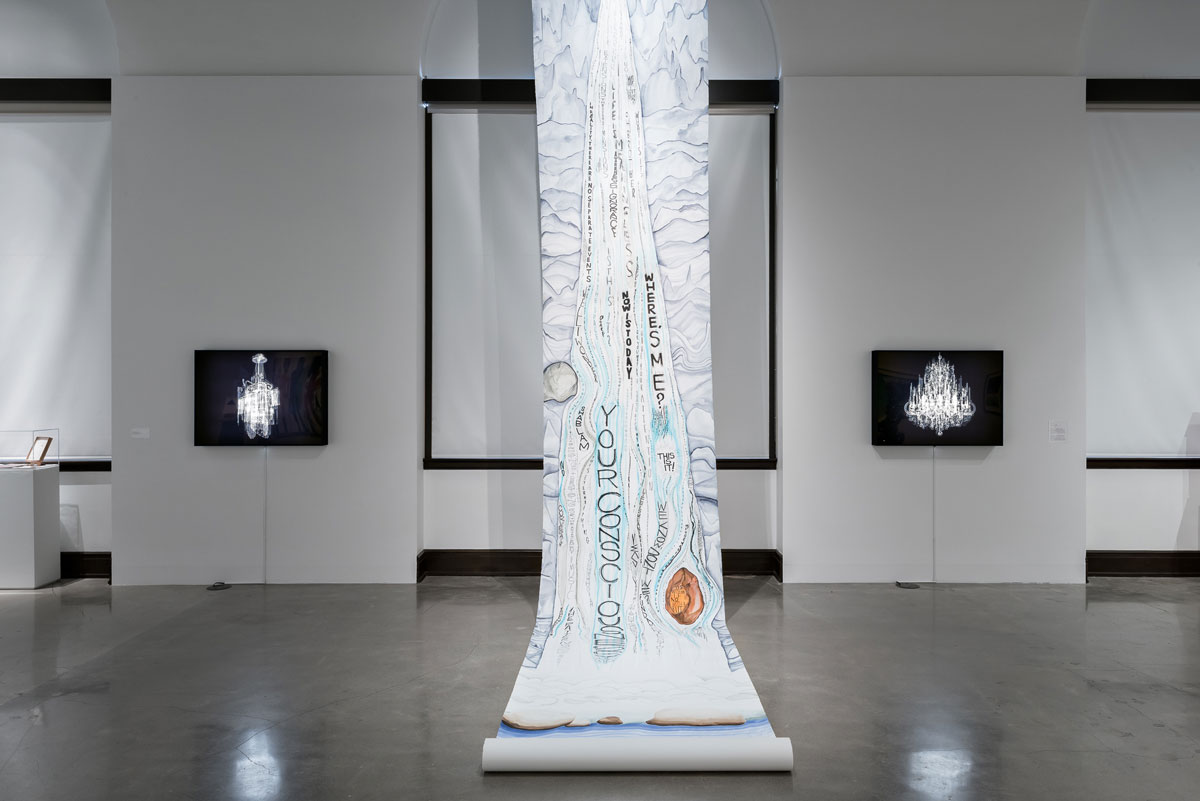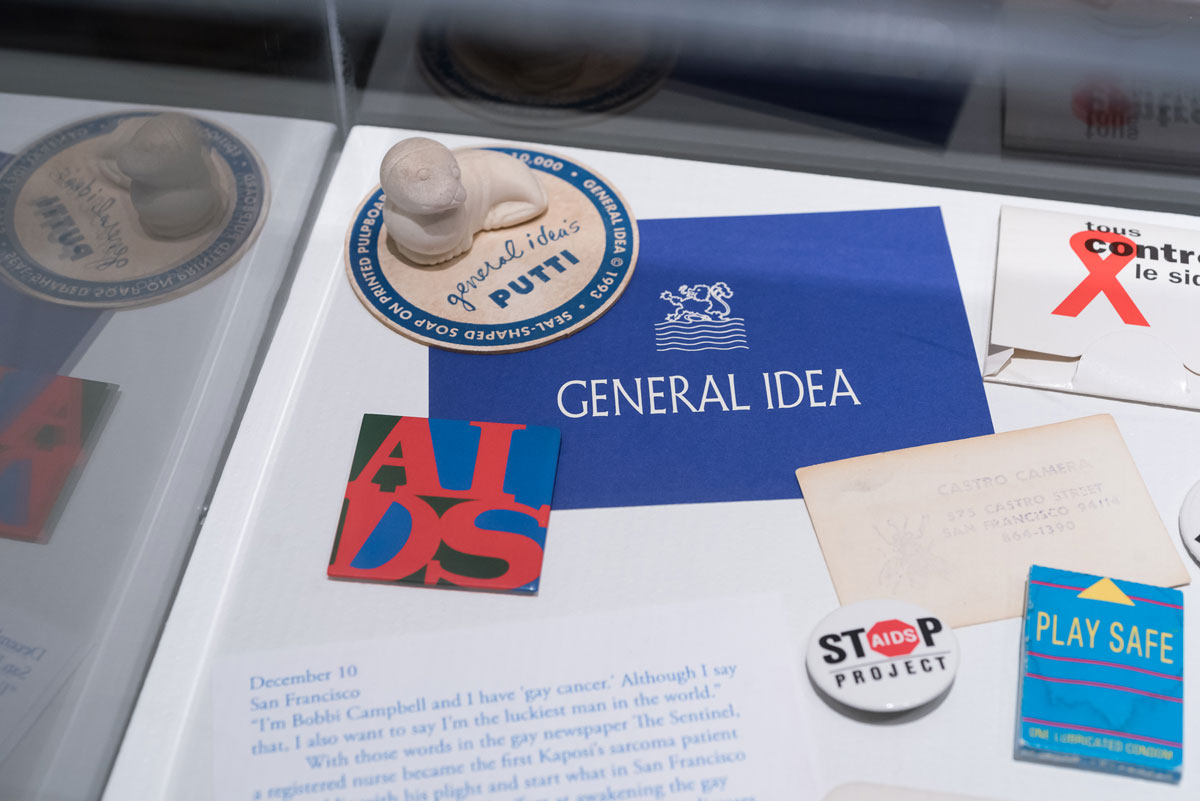In the back corner of the San Francisco Arts Commission Gallery, a small stack of Cliff Hengst’s Untitled (Signs) series lean against the wall. As a humble pile of acrylic paintings on wood, each panel obscures the text of the one behind it, and each bears an all-caps quote from James Comey’s book A Higher Loyalty: Truth, Lies, and Leadership.
The words of the powerful, the display seems to say, often amount to very little. And it’s ordinary citizens—artists, activists and the historically disenfranchised—who must advocate for themselves and their communities when no one else will.
With(out) With(in) the very moment, curated by San Francisco artist Margaret Tedesco, presents work by eight artists who witnessed moments when queer culture and activism were inseparable—and builds an argument for how those moments influenced their practices. With a focus on the legacies of HIV/AIDS activism of the 1980s and ’90s, With(out) borrows its title in part from the annual Day With(out) Art on Dec. 1, an event organized by the nonprofit Visual AIDS which calls for arts organizations to unite in a day of mourning and action, acknowledging an ongoing crisis.

The beating heart of the SFAC show is a group of works on paper by Ed Aulerich-Sugai, who died in 1994 of AIDS-related complications. During the last seven years of his life, Aulerich-Sugai was immensely productive, and just a small fraction of his output is on view. The most moving piece on view is He Cries, She Cries: Homage to Our Sisters, a large-scale horizontal full of anguished and discombobulated faces, a work that pays respect to the lesbian women who assumed the roles of caregivers during the HIV/AIDS epidemic. Hanging alongside it are delicate renderings of Japanese imagery (helmets, masks, gloves, ghosts and demons), which Aulerich-Sugai summoned as symbols of power and protection.
Aulerich-Sugai’s pairing of strong subject matter with fragile materials reflects the precarity of life during those years, a tactic picked up in later years by other artists in the exhibition. Hengst’s other contributions to the show, for example, are all works on paper, one of which cascades down from the ceiling to spread, like the waterfall it depicts, onto the gallery floor. Even a set of paintings on wood by Adam J. Ansell—messy full-body portraits of individuals—have the scaled-up dimensions of trading cards, imbuing the lively brushwork with a hint of ephemerality.

Another through-line in With(out) comes from the reuse or repurposing of materials. Creating new narratives and symbols out of found images, cut maps or mylar window tint—as Elliott Anderson, Mark M. Garrett and Mark Paron do—is life-affirming. These actions point a way forward, while still honoring the past.
In the gallery’s back corner (near the Comey quotes), a vitrine filled with ephemera from both the Gay Liberation movement and HIV/AIDS activism further documents moments of collective action by the queer community—direct, creative and undeniably necessary. Among the treasures on display are an ACT UP pamphlet, “a journal of gay liberation” called Gay Sunshine, a Keith Haring pin, exhibition catalogs from group shows at SFAI’s Walter McBean Galleries and Harvey Milk’s Castro Camera calling card. Activism and art are clearly entwined, and the aesthetic qualities of the materials are in service of the causes they urgently promote.

Near the gallery’s entrance, Nancer LeMoins’ work picks up the mantle of direct engagement with a series of silkscreen portraits of homeless women on the worn-smooth soles of shoes. In an accompanying binder, the portraits are paired with quotes from each woman. “My heart hurts when you look at me like I’m nothing,” one reads. “If only you could see me the way I see myself,” says another.
In wall text, we learn that LeMoins herself is HIV positive; in 1986 this discovery forever shifted the trajectory of her art practice, and led her to begin teaching art classes to others struggling to live with HIV/AIDS. LeMoins’ work is all from the past five years, and yet it has a timeless quality to it that speaks to the city’s ongoing inability to house its most vulnerable citizens.
What With(out) most poignantly achieves is a reminder that for those who live through times of great loss and personal tragedy, to make, as Tedesco’s opening note says, “bold work and quiet elegy” is not necessarily a choice but a way of viewing art as inextricably entwined with the struggle to lead a meaningful life.
It’s a sentiment writer Anton Stuebner echoes in You Are Not Alone, a limited edition publication displayed alongside the show’s selection of visual artwork (a bit of required reading for your post-viewing experience): “It’s my responsibility—and yours—to honor those we’ve lost by feeling joy and rage and loneliness. It is our responsibility to carve out livable lives for ourselves.”

‘With(out) With(in) the very moment’ is on view at the San Francisco Arts Commission Gallery in the War Memorial Veterans Building through June 22. Details here.